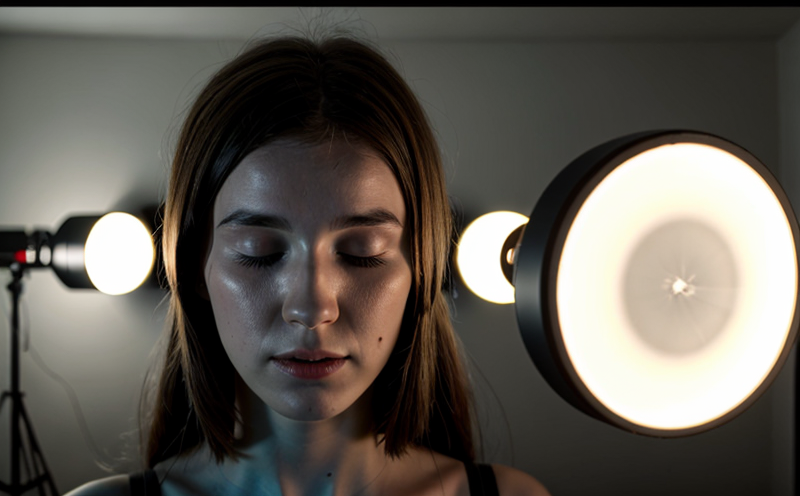IEC 60598 Flicker and Safety Testing of General Luminaires
The International Electrotechnical Commission (IEC) standard, IEC 60598, is one of the most comprehensive sets of standards for lighting devices. Within this broad suite of standards, Part 13 specifically addresses flicker and stroboscopic effects in general luminaires. Flicker can cause discomfort and visual strain, while stroboscopic effects pose a serious risk to human health and safety.
The IEC 60598-13:2017 standard provides detailed procedures for determining the light output variation of luminaire sources with respect to flickering. This includes measuring the intensity variations over time and assessing whether these variations fall within acceptable thresholds. The standard also evaluates the potential stroboscopic effects that could arise from the luminaires, ensuring they do not create dangerous conditions.
Compliance with this standard is crucial for manufacturers who wish to ensure their products meet international safety and quality standards. It guarantees that consumers are protected against harmful effects while enjoying high-quality lighting solutions. For compliance officers and R&D engineers, understanding these tests is essential in product development processes.
The testing process involves several critical steps: initial inspection of the luminaire, setup of the test environment, measurement using appropriate instrumentation, and analysis of results. The equipment used includes light meters capable of detecting minute changes in illumination levels, photometers for measuring overall luminous flux, and specialized cameras to capture any flicker or stroboscopic effects.
Preparation of specimens involves ensuring that all components are assembled correctly according to manufacturer specifications before testing begins. This ensures accurate measurement without external variables affecting the results. During testing, continuous monitoring is conducted using sophisticated software tools integrated into the test setup which can detect even slight deviations from expected performance.
The importance of compliance cannot be overstated; non-compliance could lead to product recalls or legal actions due to safety concerns. Manufacturers must therefore invest in robust quality assurance programs that include rigorous testing procedures aligned with relevant international standards like IEC 60598-13:2017.
In summary, adherence to this standard not only protects users but also enhances the reputation of manufacturers by demonstrating commitment to safety and excellence. Compliance officers should ensure their teams are familiar with these requirements, while R&D engineers need accurate knowledge of how to design products that meet them effectively.
Applied Standards
The IEC 60598 series of standards covers various aspects related to general lighting equipment. Among these, Part 13 focuses specifically on flicker and stroboscopic phenomena in luminaires. Other relevant parts include:
- IEC 60598-2-13: Covers the light output variation of luminaire sources with respect to flickering.
- IEC 60598-2-44: Addresses the color quality aspects of general lighting equipment, which can indirectly influence flicker perception in certain conditions.
- IEC 61000-4-7: Provides guidelines for electromagnetic compatibility testing that includes considerations for flicker under specific conditions.
These standards work together to provide a comprehensive framework for assessing the safety and performance of general luminaires, particularly focusing on flicker and its potential impacts.
International Acceptance and Recognition
- Europe: The European Committee for Electrotechnical Standardization (CENELEC) adopts IEC standards, ensuring that the testing procedures outlined in IEC 60598 are widely recognized across EU member states.
- Americas: Both North American and South American countries often align their national standards with those of the International Electrotechnical Commission. This alignment facilitates trade between these regions, as products that meet IEC requirements are generally accepted without additional certification.
- Asia-Pacific: Countries within this region typically follow international best practices set by organizations like IEC and CEN/CENELEC. Compliance with IEC 60598 ensures seamless market entry for lighting manufacturers in these areas.
The widespread adoption of IEC standards underscores the importance of ensuring compliance, as it opens up markets globally and enhances brand reputation among international buyers.
Environmental and Sustainability Contributions
Flicker testing contributes significantly to environmental sustainability by promoting energy-efficient lighting technologies. By reducing unnecessary flicker, manufacturers can improve the efficiency of their products, thereby conserving electricity and reducing carbon footprints.
- Energy Efficiency: Minimizing flicker helps prevent excessive light output variations that might be caused by poor design or malfunction, thus promoting efficient use of power resources.
- User Comfort: Less flicker means better user experience and reduced eye strain, contributing positively to overall well-being. This aligns with broader sustainability goals aimed at enhancing quality of life globally.
Beyond immediate benefits, compliance with IEC 60598 fosters innovation in sustainable lighting solutions. Manufacturers are encouraged to explore new technologies that not only comply but also exceed the standards set by international bodies like IEC.





